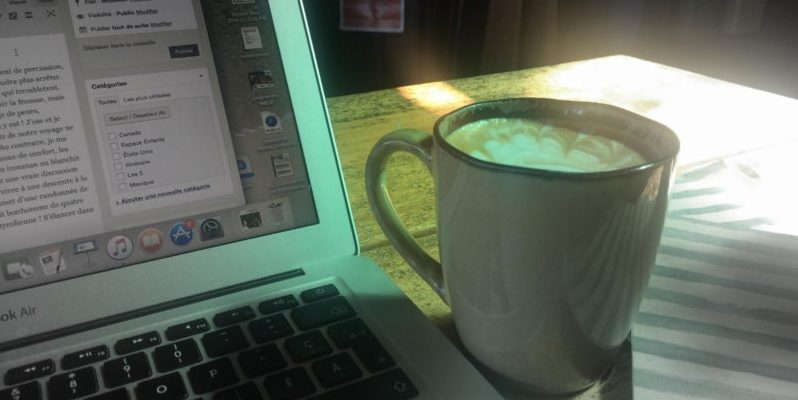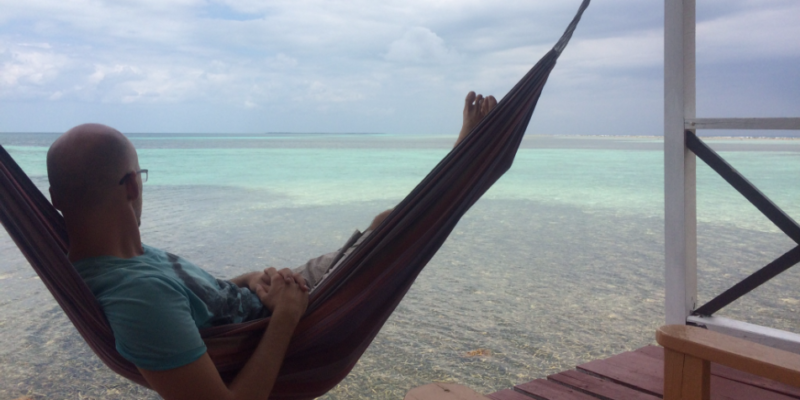
In September 2017, I received slightly over $100K as a result of the commuted value of my pension plan. I decided to invest 100% of this money into dividend growth stocks. Each month, I publish my results. I don’t do this to brag. I do this to show you it is possible to build a portfolio during an all-time high market… and stay confident during a hectic one! In the meantime, I enjoy cashing some juicy and consistent dividends!

A Different Way to Build Cash
As you know, I am purposely 100% invested all the time. All my money has been invested in equities (both U.S. and Canadian) since I started my investing journey back in 2003. It’s been 17 years of ups and down, but the market always rewarded me with healthy returns as I stick to my strategy.
When the market is down, many investors are flashing their cash and put some of it to work in the “bargains of the day”. If you have money on the side, it makes sense to use some when the market drops as it did back in March. I can’t really disagree with that strategy as it works most of the time.
What I don’t like about it is the fact that sometimes you must wait years before it happens. For example, the portfolio I’m showing here started in September 2017. At no point was my portfolio value smaller than my original amount. Not in December 2018 and not in March 2020. If I had waited to invest 30% of my portfolio in a bear market, I would have never caught up on the opportunity cost of waiting.
Does it mean I don’t have any dry powder when it’s time to invest in a depressed market? Yes and no. This is what I call a “different way of building cash”. I’ve used this technique twice in the past couple of months.
First, I have already told you of my trades on VF Corporation (VFC). I sold shares of that best performing stock in my entire portfolio (Apple (AAPL)) to buy VFC. At that time, Apple did so well that it represented about 14% of my total holdings. The company maintains about $100B in cash and equivalent on its balance sheet. This is my way of having “cash ready” to deploy.
Selling part of my “ultra winner” is a good way to:
- Reduce my exposure to this stock
- Improve my sector allocation
- Capture a market opportunity in another security
In other words, when the market goes well, I let my winners ride. Then, when things turn sour, I have a few triple digit return stocks that can be trimmed when I see a great opportunity. It’s an effective way to make sure I’m not overexposed to a single business and that I can still invest 5% of my “dry powder” into a timely opportunity.
This leads me to another trade I made that it isn’t reported in this portfolio.
Off the Book Trades
I don’t report my holdings in my other retirement account (called a RRSP for Canadians) since I wanted to use my pension account as a live case study that will follow me through the years. Reporting all my accounts would be a pain and would not add any value. However, I thought of sharing this trade with you since both stocks were discussed at DSR in the past.
I sold my shares of Lowe’s (LOW)
The reason I sold LOW in my portfolio is quite simple: Lowe’s is a great company and had done very well in my portfolio. However, with the recent price increase in their shares and the overall economic situation, I see very little upside in keeping my shares. One problem I see for LOW is how their Canadian acquisition (Rona) is running through multiple problems. Management can’t seem to generate growth in Canada and Home Depot (HD) is doing better (not only in Canada, but everywhere). I didn’t want to wait until it was too late as I was making some serious profit on this one. I sold my shares on the rebound at $119. I used the proceeds to capture a rare opportunity in this market.
Bought Brookfield Property Partners (BPY.UN.TO) (BPY)
This is a risky play and I wouldn’t be surprised to see a dividend cut down the road. However, BPY is already priced for it. The company is offering a double-digit yield which is a red flag. It tells us there is something wrong with the business. In this case, it’s obvious as their retail malls have been closed! The REIT counts 41% of its revenue from retail, 43% from offices and 16% from LP investments (including multifamily, storage, hospitality, etc.). Brookfield announced it collected 90% of its office and multifamily rent, but only 20% from retail tenants.
The investment thesis around BPY is to buy a high-quality REIT who owns premium buildings in great locations. At this point, the market has already priced in a dividend cut. However, the assets won’t disappear and the fact BPY is backed by Brookfield Assets Management ensures that BPY will have enough liquidity to work through this crisis. For the record, BPY has $7.2B in available liquidity (including $1.8B in cash) while BAM shows $59B in available liquidity (including $13B in cash).
If there is no second wave forcing the economy to close again this fall, BPY could easily jump by more than 50% by the end of the year. This is the play I’m making here knowing very well it’s a speculative move. Proceeding with caution is the watchword for this investment.
I’ve covered my income report on my YouTube channel as well, but with a different commentary topic: The “V” recovery! What does it mean? Watch it below to learn more!
Now back to my dividend income. Here’s my CDN portfolio now. Numbers are as of June 4th, 2020 (before the bell):
Canadian Portfolio (CAD)
| Company Name | Ticker | Market Value |
| Alimentation Couche-Tard | ATD.B.TO | $7,611.00 |
| Andrew Peller | ADW.A.TO | $3,942.50 |
| National Bank | NA.TO | $5,202.40 |
| Royal Bank | RY.TO | $5,661.60 |
| CAE | CAE.TO | $4,694.00 |
| Enbridge | ENB.TO | $7,224.07 |
| Fortis | FTS.TO | $5,347.98 |
| Intertape Polymer | ITP.TO | $3,765.00 |
| Magna International | MG.TO | $4,286.80 |
| Sylogist | SYZ.V | $4,453.56 |
| Cash | $555.21 | |
| Total | $52,744.12 |
My account shows a variation of +$3,464.68 (+7%) since the last income report on May 1st.
My Canadian portfolio has benefited from better than expected results from Canadian banks. NA surprised the market with better than expected results (or not as bad as expected). While the big 5 are reporting earnings drops of 40 to 50%, NA showed a 33% decline. At the same time, NA has maintained strong capital and liquidity levels with a CET1 ratio of 11.4% (compared to 11.7% as at October 31, 2019) and a liquidity coverage ratio of 149%. The bank increased its provision for credit losses to $504M, from $84M.
Personal & Commercial segment income before provisions for credit losses and income taxes totalled $389M in the second quarter of 2020, up 3% from $376M last year. On a brighter note, wealth management posted a 21% income increase for the quarter.
The unprecedented challenges brought on by the COVID-19 pandemic led RY to increase provision for credit losses of $2,830 million, up $2,404 million from last year. The increased provisions unfavorably impacted results in Personal & Commercial Banking, Capital Markets and Wealth Management. These factors were partially offset by higher earnings in Investor & Treasury Services and Insurance. The total PCL ratio on loans was 165 bps, up 139 bps from Q1. The PCL ratio on impaired loans of 37 bps increased 16 bps from Q1, due to higher PCL on impaired loans mainly in Capital Markets.
I also must note a great performance from other double-digit returns between May 1st and June 3rd:
- Magna International (+17%)
- Alimentation Couche-Tard (+12%)
With National Bank (+18%) and Royal Bank (+12%), I have 4 out of 10 positions showing double-digit returns from last month. The XIU.TO reported a jump of just 5.9% by comparison.
Here’s my US portfolio now. Numbers are as of June 4th, 2020 (before the bell):
U.S. Portfolio (USD)
| Company Name | Ticker | Market Value |
| Apple | AAPL | $7,802.88 |
| BlackRock | BLK | $7,667.94 |
| Disney | DIS | $5,498.10 |
| Gentex | GNTX | $6,450.75 |
| Hasbro | HAS | $3,550.74 |
| Lazard | LAZ | $3,138.54 |
| Microsoft | MSFT | $11,121.60 |
| Starbucks | SBUX | $6,764.30 |
| Texas Instruments | TXN | $6,360.50 |
| United Parcel Services | UPS | $3,835.05 |
| VF Corporation | VFC | $3,840.00 |
| Visa | V | $9,843.50 |
| Cash | $452.94 | |
| Total | $76,326.84 |
The US total value account shows a variation of +$6,295.51 (+9%) since the last income report on May 1st.
Like my Canadian portfolio, my U.S. portfolio has had a great run. Strangely enough, I lagged the market comeback (SPY shows +10% for the same period) as my largest position, Microsoft (+6.18%), couldn’t keep-up. Microsoft has been supporting this portfolio for a while, and it’s time to take a break.
At this point, I keep a close eye on Hasbro (HAS) as the company recently confirmed its dividend ($0.68/share) which remains unchanged for a 4th consecutive quarter. While I understand the decision of keeping more money inside the business during uncertain times, I’ll still watch Hasbro’s next quarters with more interest than usual.
A similar rationale will be applied to Lazard (LAZ) as the company is going up and down like a yo-yo. In this case, I’ll track their net inflows (or outflows). Since merger & acquisition activities will slow down, Lazard must show stable assets under management levels to generate their management fees.
My entire portfolio updated for 1st Quarter!
Each quarter, we run an exclusive report for Dividend Stocks Rock (DSR) members who subscribe to our very special additional service called DSR PRO. The PRO report includes a summary of each company’s earnings report for the period. We have been doing this for an entire year now and I wanted to share my own DSR PRO report for this portfolio. You can download the full PDF giving all the information about all my holdings. Results have been updated as of April 2020. The Q2 report will be available during my July update.

Download my portfolio Q1 2020 report.
Dividend Income: $363.32 CAD (+5.4% vs May 2019)

We experienced a rare occurrence this month as the currency factor played against me this month. Not too long ago, the conversion rate was 1.40 to 1 (or even higher!). This month, I used a conversion rate of 1.3523. Nonetheless, my total dividends paid was 5% higher than last year for the same period. The growth is compared to May 2019.
- National Bank: +9.2%
- Royal Bank: +5.9%
- Apple: -17.6% (no dividend cut. I sold some shares earlier this year)
- Hasbro: Same (red flag!)
- Texas Instruments: +16.9%
- Starbucks: +13.9%
- Lazard: Same (special dividend reduced)
Canadian Holdings payouts: $121.60 CAD
- National Bank: $56.80
- Royal Bank: $64.80
U.S. Holding payouts: $178.75 USD
- Apple: $19.68
- Hasbro: $31.28
- Texas Instruments: $45.00
- Starbucks: $34.85
- Lazard: $35.26 + $12.68
Total payouts: $363.32 CAD
*I used a USD/CAD conversion rate of 1.3523
Since I started this portfolio in September 2017, I have received a total of $8,489.47 CAD in dividends. Keep in mind that this is a “pure dividend growth portfolio” as no capital can be added into this account besides its dividends. Therefore, all dividend growth is coming from the stocks and not from any additional capital.

Final Thoughts
I’m pretty sure the market will throw us some more curve balls in the coming months. However, I’ll do my best to keep my head down and focus on what I do best: enjoy my dividend payments and spend the day with my family!
Let your portfolio breathe and stick to your strategy. In a few months, you will likely be very happy to not have paid too much attention to all this market craziness!
Cheers,
Mike.








I have sold about a dozen of my positions and bought or added to about 20 positions. I really used this as a opportunity to sell some of my positions to better quality positions in the same sector. Since my positions were down as well as the positions I purchased I figured it was a no brainer to up the quality. While my portfolio was down by near 40% MARCH 23 I have gained back about 3/4 of it. My estimated yearly dividends are down about 8% or $600 per month which is no big deal since I own a bunch of energy ,mlp,reit, Cef’s and infrastructure which has cut for now and I reinvest 100% anyway. The ONE big thing I have learned is I knew I should have sold some 0f my big winners for future purchases but I have a really hard time selling. Your article was right down my ally. Helps me to believe I sometimes do things properly. One last note while I do love my individual stocks I have some 40 plus Cef’s. for dividends . I use them for a fair amount of dividends for technology stocks that I can not get my themselves. Thank You for your time. I got a little long winded today but I am in a great mood.
Hey Dennis!
I think tech dividend stocks are among the safest place to invest right now. I have a strong exposure to this sector for the time being. I’ll eventually sell some of my positions in a few years once we are done with the virus :-).
DGB –
Taking a deep breath and letting the portfolio adjust is a decent point to make. No knee jerk reactions necessary here. The dividend portfolio will persevere, that I do believe in, 100%.
-Lanny
The easiest way to manage a portfolio is to let it do the hard work for you 🙂
Cheers,
Mike